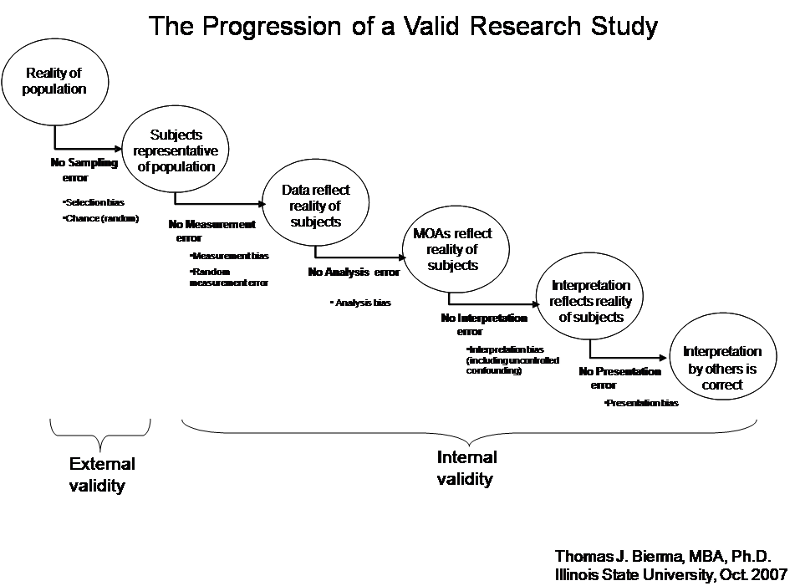Types of Bias
Bias is just error that occurs in a non-random way (random error - or "chance" - is covered in the next chapter). It does not imply that the research is prejudiced or malicious, only that something interferes with the validity of the research. Valid research should progress through the following steps:
- There is a "reality" that the researcher seeks to understand within a target population of potential subjects.
- If the researcher avoids any sampling error, then the subjects in the study are representative of the population.
- If the researcher avoids any measurement error, then the data collected from the subjects reflects each subject's reality.
- If the researcher avoids analysis error, then the measures of association generated in the analysis reflect the reality of the subjects (the true underlying association between the variables.)
- If the researcher avoids interpretation errors, then the interpretation of the relationship between the variables reflects reality.
- If the researcher avoids presentation error, then readers understand the results in the same way as the researcher.
These steps are reflected in the figure below. Error, in the form of bias, can enter the study at any one of these steps. We will explore potential bias at each step.
